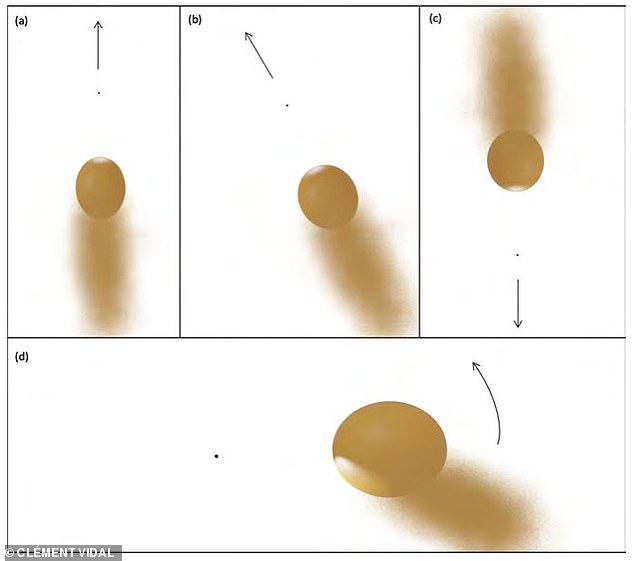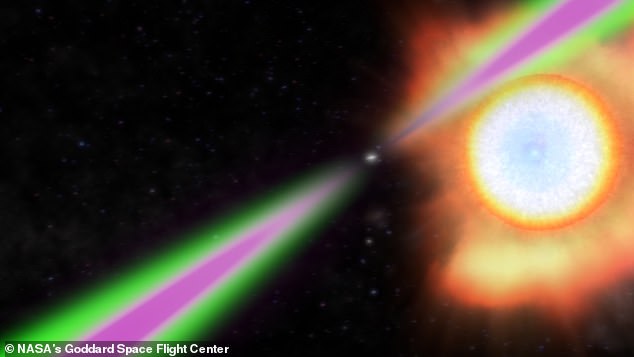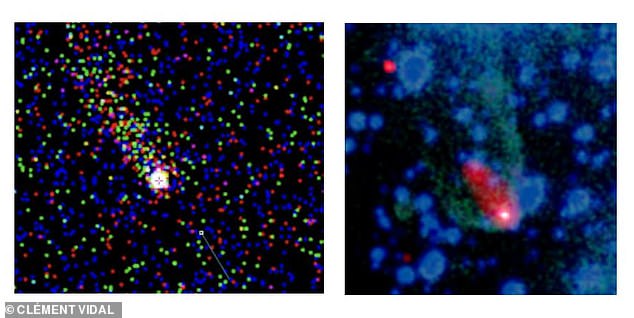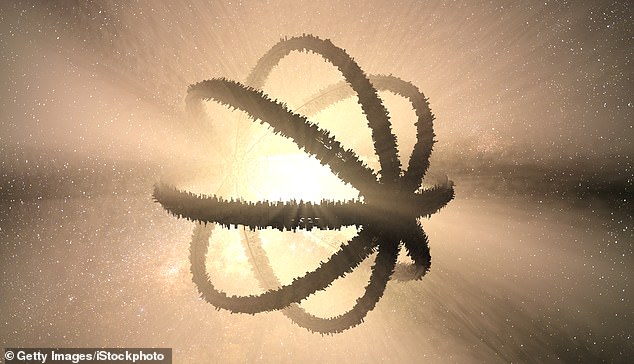From Arrival to Signs, flying saucers have been staples in sci-fi blockbusters over the years.
But instead of flying over UFOs, a new study suggests that advanced civilizations could actually move around the galaxy by propelling stars.
According to Dr. Clement Vidal, a philosopher at the Vrije University of Brussels, the fastest moving stars in the galaxy may be piloted by intelligent aliens.
The enormous distances between the stars make travel much slower and riskier.
So rather than abandon the comforts of their home system, some space races might choose to take their solar system with them, experts say.
If aliens found a way to force their star to eject material in one direction, they could create a “stellar engine” capable of traveling thousands of kilometers per second.
While this may seem like a far-fetched proposition, Dr. Vidal says it could be a reality here in the Milky Way.
It has been shown that in our galaxy there are stars with the right characteristics to become stellar engines, he says.
The fastest moving stars in our galaxy may be piloted by super-advanced alien races capable of turning their sun into a stellar engine (file image)

Researchers say an alien race could take the entire solar system with them as they traveled through the galaxy to avoid being stranded in the great distances between stars (file image)
There are two main reasons why an advanced alien race might need to travel across the galaxy.
In his paper, which has not yet been peer-reviewed, Dr. Vidal writes: “Two universal evolutionary motivations will make interstellar travel a necessity for any long-lived civilization: survival and reproduction.”
For example, an alien race might abandon their home planet to flee a disaster such as an impending supernova or to gather as many resources as possible.
Whatever their reason, Dr. Vidals explains that any alien traveling into space will soon encounter the “tyranny of the rocket equation.”
This formula for calculating rocket speed means that traveling through the universe requires going fast and light or slow and heavy.
However, since traveling from one star to another will likely take generations, no matter how fast you go, it makes a lot more sense that the aliens would choose to go slow.
The best way to do this, Dr. Vidal maintains, is to build a stellar engine that propels the entire solar system wherever it wants to go.
This would require an alien race to find some way to control which direction radiation or emissions emerged from their star.

A new study proposes that aliens could turn a star into an engine by prompting it to emit matter from its outer layers in timed bursts. As this diagram shows, the star system could be guided through space by timing the pulses.
This could be achieved by creating asymmetric magnetic fields or by intensely heating parts of the star.
Scientists have previously studied whether extremely fast-moving “hypervelocity stars” could be controlled by alien races.
So far, no hypervelocity stars show unusual movements that might indicate intelligent control.
However, what makes Dr. Vidal’s proposal different is that he suggests looking at binary star systems instead of single stars.
In particular, the most plausible candidates would be systems called ‘spider pulsars’ in which a small star orbits closely around an incredibly dense neutron star.
Spider pulsars get their name from female black widow spiders that eat their male mates after mating.
However, in this case, the neutron star destroys its companion when intense winds of energetic particles tear away the outer layers.
“Redback” spider pulsars have a companion with between one-tenth and one-half the mass of our sun, while “black widow” pulsars have a companion with less than five percent of the sun’s mass.

The most likely candidates for a stellar drive are “spider pulsars” (illustrated), which consist of a very powerful neutron star orbited by a low-mass companion that is slowly being destroyed by intense radiation.
If aliens placed their machinery near the neutron star, they could theoretically harness its intense gravity as a source of energy.
Using this, they could evaporate the companion star in carefully timed pulses, creating a thrust that would propel the entire binary system through space.
By varying the timing of these pulses, the alien civilization could even direct its system with some level of control.
For example, if they always activated the pulse at the same time, the system would continue going in the same direction.
But if they activated the machine a little later, they could change the direction of the pulse and alter its course.
To move in a direction outside of orbit, the aliens would simply change where their equipment was pointing to alter the angle of the pair’s orbit.
Surprisingly, Dr. Vidal maintains that there are several stars who match these very specific criteria.
For example, the ‘black widow’ pulsar PSR J0610-2100 and the ‘red back’ pulsar PSR J2043+1711 have the right combination of a dense X-ray neutron star and a closely orbiting companion.

Researchers say the black widow pulsar PSR J1959+2048 (illustrated) could be a plausible candidate for a stellar drive used by an alien race to try to trap a nearby star.
Last year, NASA’s Chandra X-ray Observatory detected five more spider pulsars in the globular cluster Omega Centauri.
Dr. Vidal says the theory is plausible enough to merit further investigation.
By keeping an eye out for potential distinguishing features of advanced civilizations, researchers can narrow their search for elusive technosignatures.
Researchers have previously suggested that similar methods could be used to search for stars that show signs of vast superstructures called Dyson Swarms.
Likewise, fast-moving spider binaries could be good candidates for further investigation if there is even a slight chance of them being used as stellar engines.
Dr. Vidal added: “I see the outstanding candidates and predictions for spider-like stellar engines as promising starting points and leads that require further attention, observation, modeling and follow-up.”


